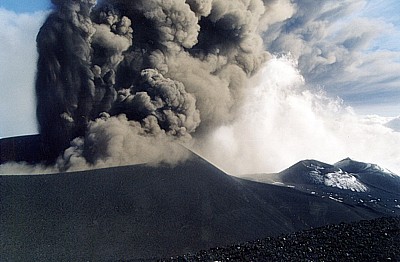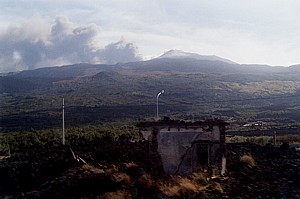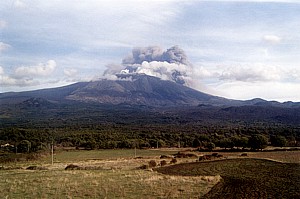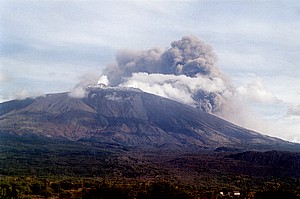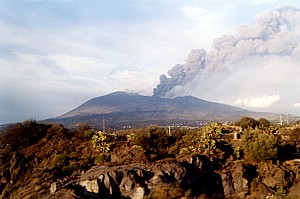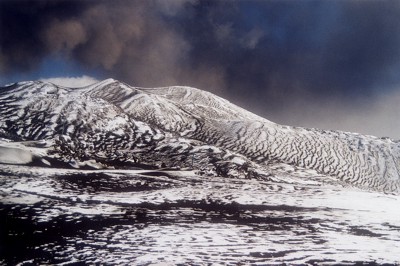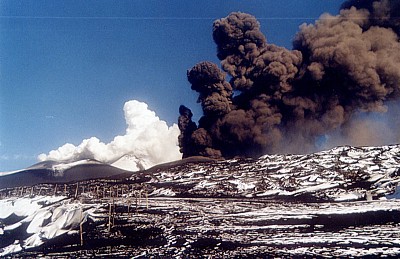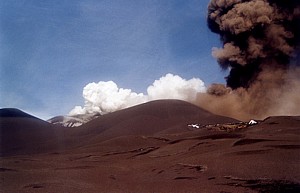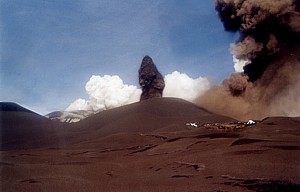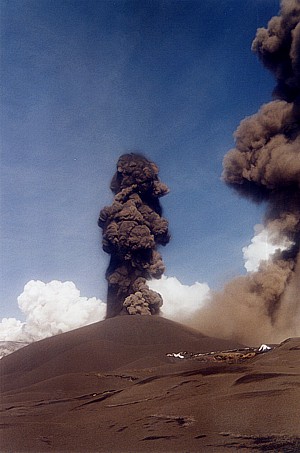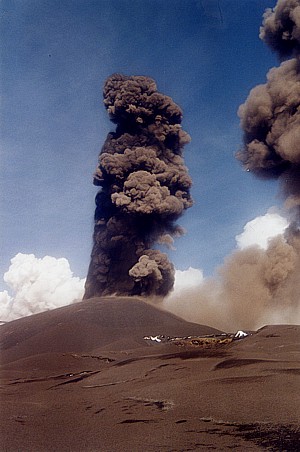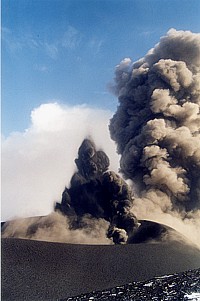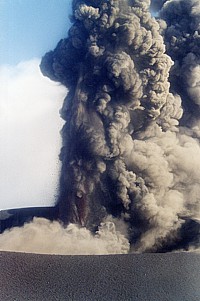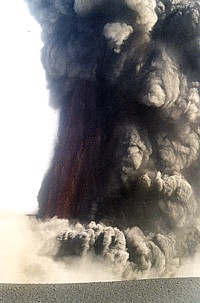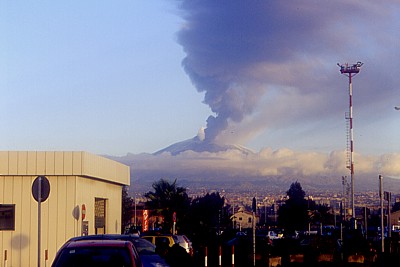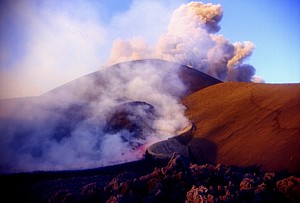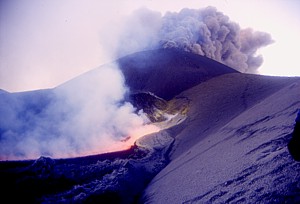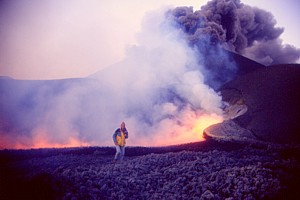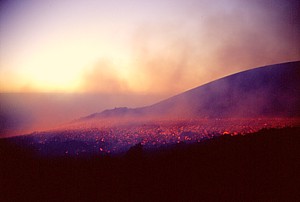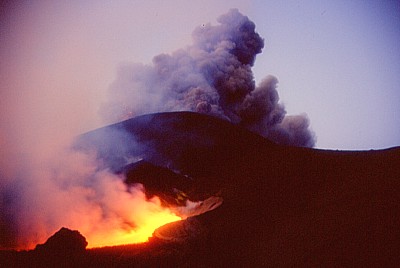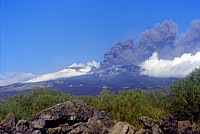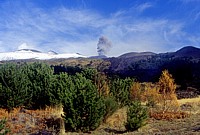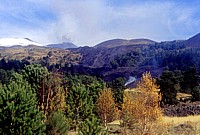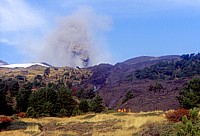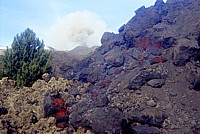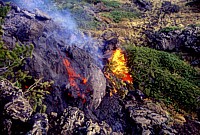| Etna
index |
||
| Geology | Geological history | Cones and craters |
| Eruptive characteristics | Eruptions before 1971 | Eruptions since 1971 |
| Etna and Man | References | Web sites |
| Weather forecasts | FAQ | Latest news |
Etna
photo gallery: 2002
Etna on the move - the 2002-2003 eruption (3)
![]()
Roundtrip with the Circumetnea, 4 November 2002
To the mouth of the monster, 9 November 2002
On
the early morning of 9 November, following a heavy snowfall on
the previous day, the Montagnola has transformed into a world
of marvels. Strong wind during the snowfall and the simultaneous
fall of ash from the ongoing eruption led to the creation of the
peculiar black-and-white patterns on the slope of that cone |
Splendid
weather conditions are greeting those people who are venturing
to the still-active cone on the upper southern flank of Etna on
the morning of 9 November 2002, following several days of absolutely
bad weather. Ash emissions from the active cone are pulsating,
as can be neatly seen in the succession of uprising ash puffs
in this image |
Ash, ash, and still more ash, 11 November 2002
Fifteen
days after the beginning of the eruption, a towering ash column
continues to darken the skies above Catania and surrounding areas,
and the international airport of the town (from which this photograph
was taken) remains closed on many days. While eruptive activity
ended on the Northeast Rift on 5 November, the single remaining
active south flank vent shows no signs of shutting down |
Sunset at the new lava flow on the south flank, 16 November 2002
A
last look on the beautiful display of the lava flow issuing from
the southern base of the enormous, and still growing, pyroclastic
cone on Etna's upper southern flank on the evening of 16 November
2002. After this visit, I shall not return to that place until
June 2003, more than half a year later |
The other end of the lava flow, 20 November 2002
Return to the Etna photo gallery
Copyright © Boris Behncke, "Italy's Volcanoes: The Cradle of Volcanology"
Page set up on 4 August 2003

